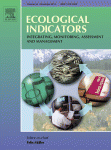Ver ítem
- xmlui.general.dspace_homeCentros Regionales y EEAsCentro Regional Patagonia NorteEEA BarilocheArtículos científicosxmlui.ArtifactBrowser.ItemViewer.trail
- Inicio
- Centros Regionales y EEAs
- Centro Regional Patagonia Norte
- EEA Bariloche
- Artículos científicos
- Ver ítem
Evaluating the performance of multiple remote sensing indices to predict the spatial variability of ecosystem structure and functioning in Patagonian steppes
Resumen
Assessing the spatial variability of ecosystem structure and functioning is an important step towards developing monitoring systems to detect changes in ecosystem attributes that could be linked to desertification processes in drylands. Methods based on ground-collected soil and plant indicators are being increasingly used for this aim, but they have limitations regarding the extent of the area that can be measured using them. Approaches based on remote
[ver mas...]
Assessing the spatial variability of ecosystem structure and functioning is an important step towards developing monitoring systems to detect changes in ecosystem attributes that could be linked to desertification processes in drylands. Methods based on ground-collected soil and plant indicators are being increasingly used for this aim, but they have limitations regarding the extent of the area that can be measured using them. Approaches based on remote sensing data can successfully assess large areas, but it is largely unknown how the different indices that can be derived from such data relate to ground-based indicators of ecosystem health. We tested whether we can predict ecosystem structure and functioning, as measured with a field methodology based on indicators of ecosystem functioning (the landscape function analysis, LFA), over a large area using spectral vegetation indices (VIs), and evaluated which VIs are the best predictors of these ecosystem attributes. For doing this, we assessed the relationship between vegetation attributes (cover and species richness), LFA indices (stability, infiltration and nutrient cycling) and nine VIs obtained from satellite images of the MODIS sensor in 194 sites located across the Patagonian steppe. We found that NDVI was the VI best predictor of ecosystem attributes. This VI showed a significant positive linear relationship with both vegetation basal cover (R2 = 0.39) and plant species richness (R2 = 0.31). NDVI was also significantly and linearly related to the infiltration and nutrient cycling indices (R2 = 0.36 and 0.49, respectively), but the relationship with the stability index was weak (R2 = 0.13). Our results indicate that VIs obtained from MODIS, and NDVI in particular, are a suitable tool for estimate the spatial variability of functional and structural ecosystem attributes in the Patagonian steppe at the regional scale.
[Cerrar]

Fuente
Ecological indicators 34 : 181-191. (Nov. 2013)
Fecha
2013-11
ISSN
1470-160X
Formato
pdf
Tipo de documento
artículo
Palabras Claves
Derechos de acceso
Restringido
 Excepto donde se diga explicitamente, este item se publica bajo la siguiente descripción: Creative Commons Attribution-NonCommercial-ShareAlike 2.5 Unported (CC BY-NC-SA 2.5)
Excepto donde se diga explicitamente, este item se publica bajo la siguiente descripción: Creative Commons Attribution-NonCommercial-ShareAlike 2.5 Unported (CC BY-NC-SA 2.5)

